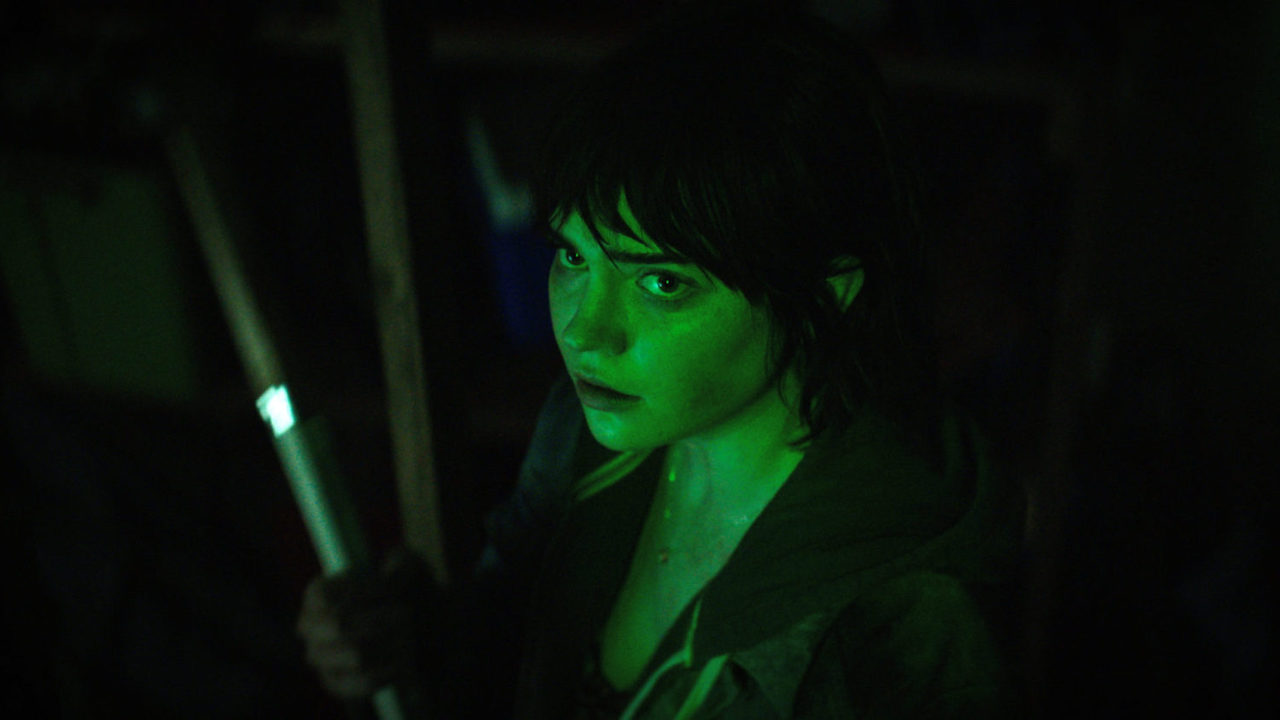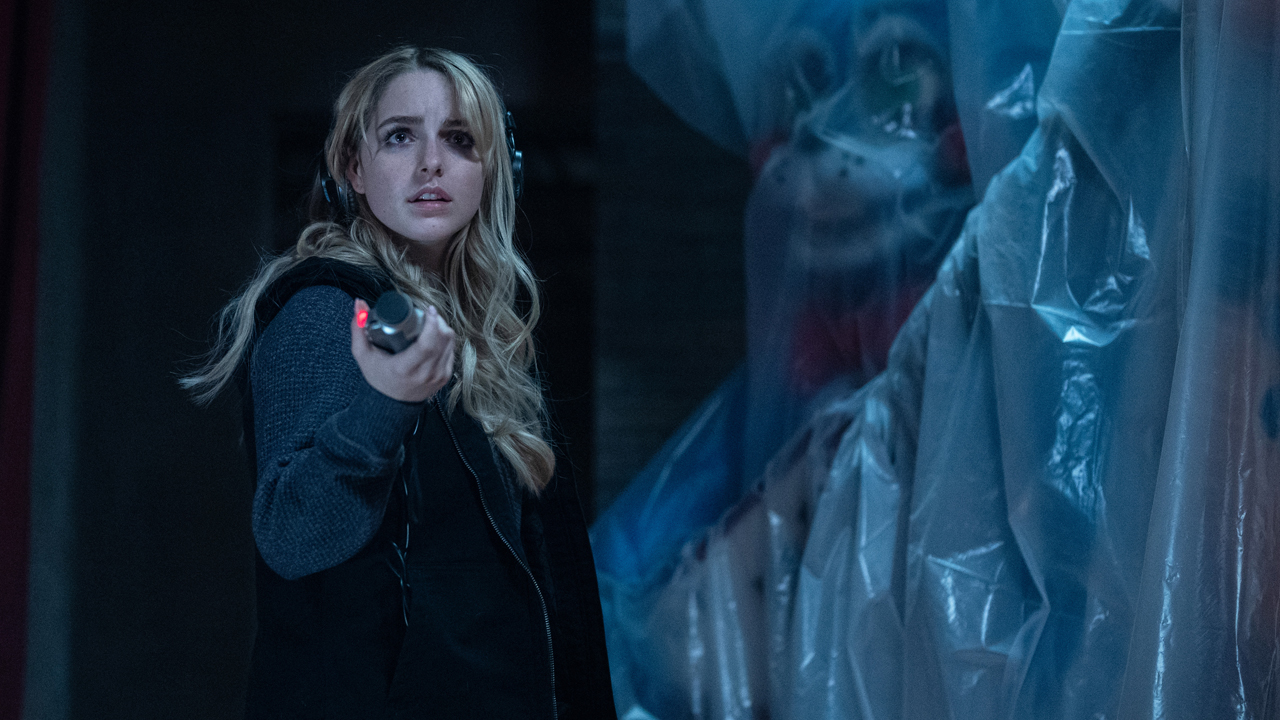The Boogeyman Ending: How It Ties To The Stephen King Story And The Version That Got Rewritten
Spoilers!

SPOILER WARNING: The following article contains massive spoilers for The Boogeyman. If you have not yet seen the film, read on at your own risk!
The Boogeyman has an appropriately horrifying ending to go in tandem with all of the terror that precedes it. In a pitch dark basement, the Harper family squares off with the unrelenting titular monster, and while it seems briefly that Sadie (Sophie Thatcher), her sister Sawyer (Vivien Lyra Blair), and their father Will (Chris Messina) have killed the creature and can live in peace, their safety is called into question as a result of a spooky moment following a family therapy session in the aftermath. It’s a satisfying conclusion to the movie – and particularly interesting in the context of the Stephen King short story it’s based on and earlier drafts of the script.
I learned a lot about The Boogeyman’s ending when I interviewed director Rob Savage about the film prior to its theatrical release. In particular, he discussed how the movie was designed to pay tribute to the memorable, horrifying ending of the source material, and he revealed details about early drafts of the script that demonstrate just how much the movie changed over the course of development.

How The Boogeyman Ending Ties Back To The Stephen King Story
The Boogeyman has a strange relationship with the Stephen King short story of the same name, as it operates as both an adaptation and a sequel rolled into one. In King’s version, the protagonist is Lester Billings, an emotionally raw man who goes to a therapist after he becomes convinced that a monster has killed his three children, and the film makes Lester a supporting character who leads the Boogeyman, so to speak, to the Harper family. Most of the movie is built on an original narrative following the Harpers, but Rob Savage and screenwriters Mark Heyman, Scott Beck, and Bryan Woods made a point of having the ending tie back to King’s creation.
As Savage explained, this was partially accomplished through the look of the eponymous creature. The Boogeyman isn’t fully described by Stephen King in the short story, but it inspired certain ideas:
We were always trying to look back to the short story and think, 'How can we stay true to this and how can we kind of pay homage to this?' And it's kind of twofold. The terrifying bit of the short story when he goes back in and you realize the therapist he's been speaking to this entire time is the Boogeyman, peels off its skin suit, and you reveal it underneath. And so we kind of pay homage to that with the design of the creature.
There isn’t a scene in the film where The Boogeyman attempts to pass off as human by wearing a skin suit, but the idea of that led to the nightmarish presentation of the monster in the basement battle after its full form is teased in earlier scenes. Savage continued,
I knew that we would ultimately be seeing a lot of this creature at the end. I wanted it to be scary still. I didn't want you to feel like you'd seen everything. So we had this idea of the creature then pulling back its skin and revealing another layer beyond, almost in this kind of impossible, Lovecraftian way. So that was paying homage to the short story.
The director also spoke to the aforementioned family therapy scene, which is much more directly based on the short story (with Sadie being mysteriously called back into the psychiatrist’s office, seeing the closet door open, and realizing that it wasn’t the doctor who summoned her). Rob Savage took inspiration not only from Stephen King with the scene, but one of the most beloved modern Japanese horror films:
Your Daily Blend of Entertainment News
The ending was us trying to give it that... I really wanted to feel like the ending of Ringu – that idea of, 'We've beaten it! No, we haven't. It's still out there. You've gotta keep it at bay, but it's still lurking.' I mean, you can't end the movie and kill The Boogeyman. Nobody can kill The Boogeyman. Any John Wick fan will tell you that.
The creepy tease doesn’t specifically ask for a sequel, but instead builds on the larger themes of the film about grief – which, like the Boogeyman, never truly goes away. Having the conclusion tie into the larger message of the film was something that was very important for the director, and it was one thing that entered the picture when the Boogeyman ending was almost wholly changed.

Earlier Drafts Of The Boogeyman Had A Completely Different Ending
When The Boogeyman first entered development back in 2018, A Quiet Place writers Scott Beck and Bryan Woods were hired to both produce and write the screenplay, but Black Swan writer Mark Heyman was brought on to do a new draft when Rob Savage came aboard to direct the film in November 2021. During that period of development, the script ended up changing quite a lot, including the third act.
According to Savage, the version of the movie penned by Scott Beck and Bryan Woods featured Will as its protagonist instead of Will’s children, which had a major impact on the way the plot unfolded, and there were different ideas in play for where the antagonist was living. Said the director,
I think in Beck and Woods' draft there was something that happened where the creature was living in the wall cavities. It was a bit like that movie The Pact, which is a movie that I really love, actually. There was some something to do with that; I can't remember exactly what it was. And Will, I think, went to visit Rita and I think she was in like a mental asylum or something. The third act played out very differently. And I don't think you saw what happened to the kids, and then he came back and had to rescue the kids. So it was something like that.
Continuing, Rob Savage explained that he worked with the filmmakers to not stack plot events at the end of the movie but instead have everything flow together organically in a way that let the themes mix with the monster:
I wanted it to feel like at the end the themes of grief and loss collided with our monster movie, and it didn't feel like we were having to do two endings. We didn't want this to be Return of the King where we were having to end everything on its own terms. It wanted to feel like the two strands were on a collision course.
It was this approach that ultimately led to the idea of The Boogeyman making a home in the collection of stuff belonging to Sadie and Sawyers’ deceased mother that had been stacked in the basement. Said Savage,
This idea of all the stuff that the family don't want to talk about being represented by these boxes of stuff they don't know whether to get rid of or to keep, and that becomes the kind of lair for this, this creature. That represents the unspoken. That's where things fester. That's where this creature sets up its nest and our family has to go and face it.
With the Harpers battling the Boogeyman in the basement, they literally have to face their grief – and, of course, their love for their mother and her spirit come to her aid at the end. Her presence is clearly with Sadie, Sawyer and Will at the end… and let’s not forget that it’s her lighter that is used by Sadie to set The Boogeyman on fire and turn it to ash.
The Boogeyman is now playing in theaters. For more reading, you can check out my CinemaBlend review of The Boogeyman, learn about the full history of Stephen King’s works in film and on television with my Adapting Stephen King column, and discover all of the adaptations that are in the works with our Upcoming Stephen King Movies And TV guide.

Eric Eisenberg is the Assistant Managing Editor at CinemaBlend. After graduating Boston University and earning a bachelor’s degree in journalism, he took a part-time job as a staff writer for CinemaBlend, and after six months was offered the opportunity to move to Los Angeles and take on a newly created West Coast Editor position. Over a decade later, he's continuing to advance his interests and expertise. In addition to conducting filmmaker interviews and contributing to the news and feature content of the site, Eric also oversees the Movie Reviews section, writes the the weekend box office report (published Sundays), and is the site's resident Stephen King expert. He has two King-related columns.
